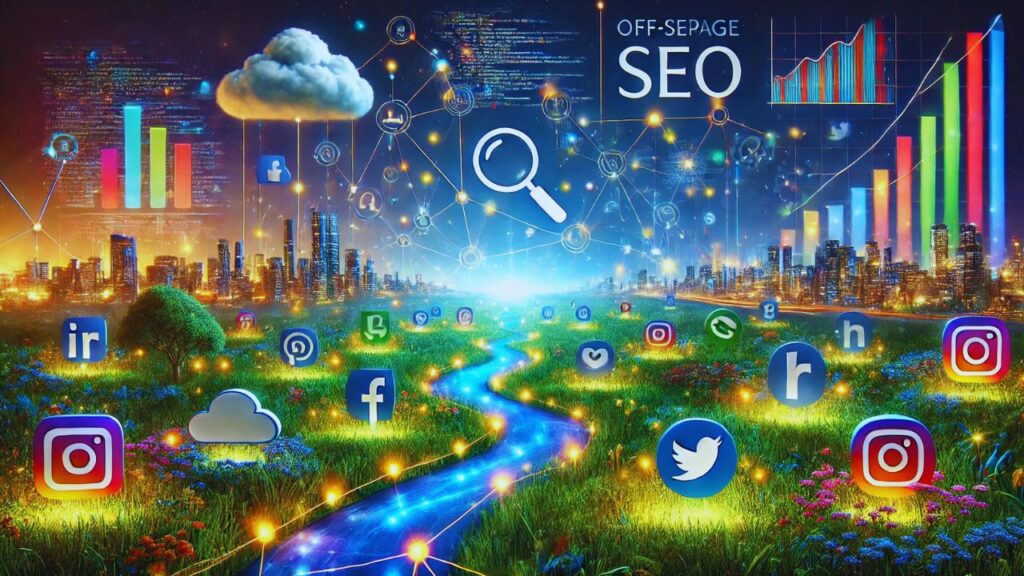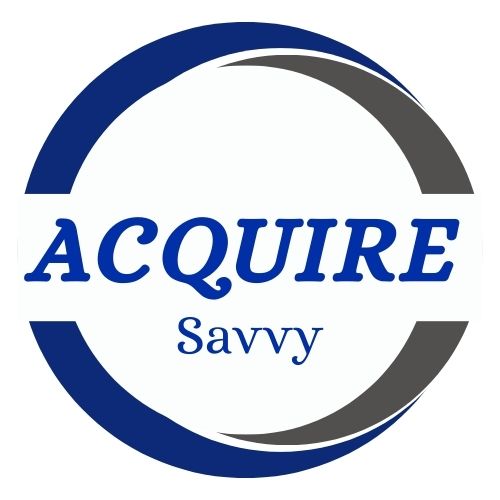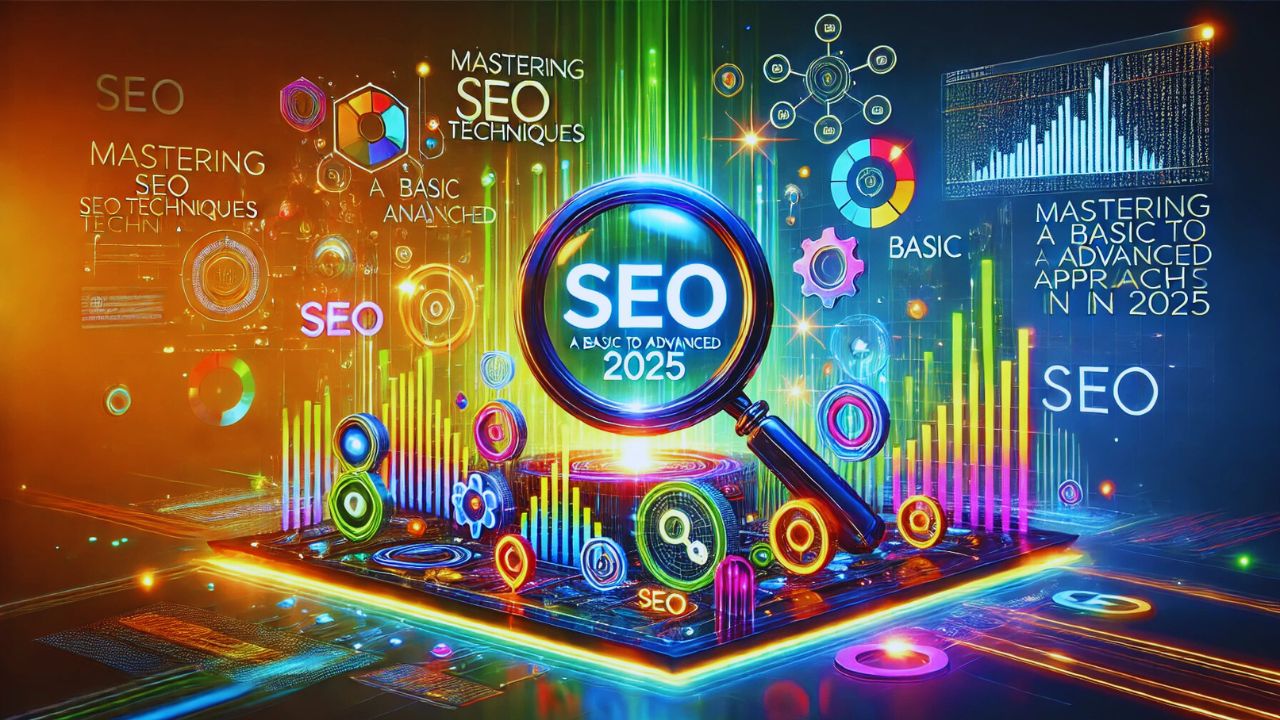Want to grow your website’s traffic and rank higher on Google? Our guide to mastering SEO techniques in 2025 covers everything from the basics to advanced strategies. Whether you’re just starting or looking to refine your skills, these proven tips will help you stand out in search results!
What is SEO?
SEO (Search Engine Optimization) is the process where we make our website more visible on Search Engines like Google, Yahoo, Bing, etc by optimizing our website’s content, and keywords, and enhancing user experience, SEO helps search engines understand what your site is about and rank it higher in search engine result pages based on relevancy and few more factors.
Here is Google’s Search Engine Optimization (SEO) Starter Guide
Why is SEO Important for Online Presence and Traffic?
21st Century, also known as Digital Book, If you want to gain traffic no matter if you have a local store or wide business, the Digital world has no boundaries, and SEO is essential for getting noticed online. The online world drives you organic traffic, meaning visitors come to your site without paid ads.
A higher search ranking boosts your visibility, leading to more clicks, more visitors, and more opportunities to grow your business locally as well as online. SEO is a must for standing out and attracting the right audience.
Here is the SEO Basic Guide from Neil Patel
How Does a Search Engine Work?
Search engines such as Google, Bing, Yahoo, etc have bots known as “Crawlers” of spiders. Let’s suppose you have a website. You prepared a webpage whose content is about, say, “Shoes for men.” Here, your focus keyword is “Shoes for men” and you will also use variations of this keyword, such as formal shoes for men, casual shoes for men, best shoes for running, brand-specific keywords such as Puma shoes for men, Adidas shoes for men, or price-specific keywords such as shoes for men under 1000. So your content has these Secondary keywords, and you published this page.
Now a crawler will visit your website and will take screenshots of your website known as “Snapshots”. Now this process where a crawler visits and takes snapshots of your website is known as “Crawling”.
Let me make it clear, Crawler doesn’t literally take “screenshots” of the page but instead downloads and reads the HTML code to understand its structure, content, and metadata.
The bot will save the information collected from the web page and store this in its database known as the search engine’s index. And when these pages are ready to be presented to users in Search Engine Result Pages (SERPs). So, Indexing can be understood as a process where bot organise this data so it can be quickly retrieved when a user searches for a related keyword.
On the other hand, a user searches about shoes and then the Google search engine will ask the crawler for the most relevant page to present against the query searched by the user. And as your page was about shoes for men. The bot will present the indexed webpage from its database into SERPs. Search Engine Algorithms decide the ranking of your webpage accordingly.
Here is an Overview of Crawling and Indexing by Google
Keywords we Learned:
- Crawling: The process where a crawler visits and extracts details of your website is known as Crawling
- Snapshot: The collected data is stored in the search engine’s index, not as an actual screenshot but as processed information about the page.
- Indexing: Organizing and storing crawled data so it’s ready to be retrieved and ranked for user queries.

What is the role of algorithms in Ranking?
To understand the right SEO Techniques and the role of algorithms in ranking, firstly we need to make it clear what are Search Engine Algorithms. Think of the Search engine as a judge of a wrestling competition, and the algorithms are the judging criteria. When a user searches for something, This set of rules decides which page out of the billions is the best match based on various factors.
How Algorithms Influence Ranking
A webpage is evaluated on certain criteria which we will discuss and based on them, a particular ranking is assigned by the search engine. Let’s study these factors by taking our shoes webpage example:
- Relevance to Search Query – Algorithms check how relevant is your content to the search query, which can include factors such as Keywords used, Search Intent, and Variations of keywords used in the content. If someone searches for “best shoes for running,” the algorithm prioritizes pages that provide detailed information on running shoes rather than general shoe or formal shoe stores. Which indeed was our secondary keyword or we can say variation Keyword
- Page Quality and Content Depth – Search engines like high-quality content that provides value to users. Algorithms check whether the content provides authoritative information covers all detailed topics (Relevant), and is the content easy to understand and original to the website.
- User Experience (UX) – this factor is crucial as search engines prioritize user experience on your website the most. Your website should be easy to navigate, mobile friendly, and loading fast, which reduces your Bounce Back rate and retains your user.
- Backlinks and Authority – The Authority of a website is based on Backlinks (Links from other websites). Pages with high authority have higher chances to rank first in SERPs.
- Social Signals and User Interaction – this may not be a direct factor but, Search Engine may consider social signals such as shares, likes, and comments on platforms like Facebook, Twitter, etc. as indicators of content relevance and engagement.
- Freshness of Content – Search Engines may prefer up-to-date information to present to the user.
Search engines such as Google, Yahoo, etc regularly update their algorithms to improve the relevance and quality of the search result.
Here is the Google algorithm update History
What Exactly is Search Engine Optimization?
Search Engine Optimisation (SEO) is the process by which we optimize our website or a webpage to improve its visitability and ranking in Search Engine Result Pages (SERPs). Our objective is to drive organic traffic by making the content more relevant, authoritative, and user-friendly for both search engines and users. All this is possible by deciding right SEO Techniques.
Components of Search Engine Optimisation
There are 5 Components of SEO:
- On-Page SEO – Focuses on Elements of webpages such as Keywords, Meta Tags, Content Structure, Images, Videos, etc.
- Off-Page SEO – Activities done outside the web pages to enhance Brand Awareness, Authority, etc come under Off-Page Activity.
- Technical SEO – This Component deals with technical parts such as crawling, indexing, page loading speed, Mobile friendliness, etc of a website that enhances User Experience.
- Local SEO – Local Business helps Businesses gain visibility in their Local areas. This is done by adding accurate local citations (NAP: Name, Address, Phone number).
- Content SEO – This Component deals with the Content structure, heading tags, images, interlinkings, relevancy, and most importantly E-E-A-T Factor.
E-E-A-T stands for Experience, Expertise, Authoritativeness, and Trustworthiness. This is a set of guidelines used to evaluate Content Quality.

What are Keywords in SEO?
Keywords are the words or phrases that users use on search engines like Google or Yahoo to find relevant results. Keywords are the main bridge between what a user wants to see and what is your content about. They can be classified into 2 major parts:
1) Short Tail Keywords: these are generic keywords with a vast field of information high search volume and high competition. They are difficult to rank on.
2) Long Tail Keywords: These are specific keywords with specific pieces of information with low search volume and low competition. They are easy to rank on.
3) LSI Keywords: LSI Stands for Latent Semantic Indexing Keywords. They are those keywords that are conceptually related to your focus keyword, they enhance your relevancy
Eg. of LSI keywords can be
- Main Keyword: “Shoes for Men”
- LSI Keywords: Formal shoes for men, Casual footwear for men, Best running shoes, Leather shoes for office wear, Affordable men’s shoes.
Google analyses the keyword’s search engine and provides the content that is most relevant to the search intent eg. Informational, Navigational, Transactional, or commercial.
What user want to know by his search?
Search Intent refers to the primary goal of the query searched by the user to find the most relevant content. Search intent can be classified into 5 major parts.
-
Informational: Queries by which the user wants to gain some information.
E.g.: What is SEO? or How to Rank our Website. etc -
Navigational: Queries by which a user wants to find a specific Website, Band, or web page.
E.g.: Facebook login, Nike official site, etc -
Commercial: Queries by which the user researches products or services before making a decision.
E.g.: Best Digital Marketing Course in India, Best laptops under 50,000. Etc -
Transactional: Searches by which the user wants to perform transactions.
E.g.: Buy Running Shoes Online, SBI Online Login, etc
On-Page SEO Basics and Advanced Techniques
On-page SEO Deals with the elements that a user can see and experience after visiting a website such as Titles, Descriptions, Images, Keyword placement, Relevance, Content hierarchy, etc.
Firstly we will discuss what a user sees first after searching query in a search engine. Taking the example of a blogging website, we prepared content based on Digital Marketing. Here meta tags which are the first thing that grabs the attention of users in Search Engine Result Pages (SERPs) must be relevant and engaging to the searched query.
Meta Title character limit is 55 to 60 characters and for Meta Description character limit is 155 to 160. If we exceed the limit then the title or the description will appear incomplete in dotted form.
Secondly, the Title and Content Structure, The Blog Title must be relevant to the searched Query, and the Content Hierarchy must be in proper formatting and user-friendly.
Heading Tags which are H1, H2, H3, H4, H5, H6… and so on…
- H1 is the heading tag and must be used only once throughout the content
- H2 is Sub Headings, that can be used Multiple times.
- H3 is Sub-Sub Headings which can also be used multiple times but only after the H2 Tag.
- Similarly, H4 can be used multiple times but only after H3 Tag and so on….
Content Optimization is just making our content relevant to the Queries and Keywords, setting meta tags and heading tags according to the format. Keyword placement plays a crucial role in content optimization, here we need to make the crawler understand what my content is about and also avoid Keyword stuffing. To enhance the user experience.
Off-Page SEO Techniques
Off-page activities are those that are performed on the back side of the website such as Link Building which helps in increasing Authority and Brand awareness etc.
Link Building or creating Backlinks is getting links from different websites to our websites. It has few factors such as niche, relevancy, referring domains, etc. which we will discuss further.
Off-Page SEO plays an vital role in Best SEO Techniques. Here are some effective Link Building techniques:
Guest Blogging
- Write an article for reputable websites that deal in your niche.
- Include backlinks to your site, gain authority, build relationships, and drive referral traffic.
Outreach
- Contact website owners to request backlinks by pitching your content’s value.
- Build connections with influencers and acquire authoritative backlinks.
Broken Link Building
- Identify broken links on relevant websites using tools like Ahrefs.
- Suggest your content as a replacement, adding value while gaining backlinks.
Here is Google’s guide on backlinks

Why do we need a Strong Backlink Profile?
Having a strong backlink profile is important because it helps search engines see your website as trustworthy and reliable. This trust enhances your webpage’s visibility in Search Engine Result Pages, making it easier for people to find your site.
What are Quality Backlinks?
Quality backlinks are those links from another website that are Highly relevant, have good authority, and are trusted by search engines. These quality backlinks act as a “Vote of Confidence” which indicates how worthy and valuable your content is. Quality backlinks are like the backbone of effective SEO Techniques.
The quality of a link can be determined by a few factors such as Domain Authority (DA), Page Authority (PA), Spam Score (SS), and type of backlink that is provided i.e. Do-Follow or No-Follow link.
- Domain Authority (DA): The overall trustworthiness and credibility of the Domain are assessed by Domain Authority, on a scale of 1-100. Higher DA indicates a stronger link.
- Page Authority (PA): The strength and relevance of the specific page on a website is evaluated by Page Authority, on a 1-100 scale. Higher PA indicates a stronger link.
- Spam Score (SS): It indicates the likelihood of a website being spammy or low-quality. Lower scores are better for backlinks. Lower SS indicates a stronger link.
- Do-Follow: By the bridge of the Do-follow link, Crawler can visit our website and crawl for information. Do Follow links allow Link Juice to flow to our website.
- No-Follow: By the bridge of the No-follow link, Crawler will not visit our website. No-follow links do not allow Link Juice to flow to our website.
Note: Crawler will not crawl the linked website (in case of a no-follow link) but it can review the linked website to know the relevancy and whereabouts of the link.
Technical SEO for Beginners and Advanced Users
Technical SEO is a branch of SEO that deals with Technical issues of the website such as Page Loading Speed, Crawling, Indexing, mobile friendliness, sitemaps, etc.
Technical SEO plays an important role in Best SEO Techniques. Let us discuss a few factors one by one.
What is the Importance of Website Speed and Mobile Optimization
Website Speed: A fast website keeps users happy and engaged while improving your user experience and search rankings. Slow sites frustrate visitors and lead to higher bounce rates, reducing your chances of conversions and the probability of ranking higher in SERPs.
To improve Website Speed we can Optimize images, use caching, and compress website code.
Here is Moz’s guide to Technical SEO
Why is Mobile Friendliness important?
According to Google, around 95% of the traffic on Google is from Mobile, and the remaining is from Desktops. So it is clear that Google prefers websites that are mobile-friendly site.
Mobile optimization ensures your site looks great and works smoothly on all devices. Using responsive design and simplifying navigation for a better experience for mobile users.
What are Sitemaps and Robots.txt Files
- Sitemaps and their types
Sitemaps are like road maps that are used by crawlers to navigate correctly and crawl efficiently.
Sitemap.xml is used by Search Engine Bots or Crawlers whereas Sitemap.html is used by user for easy navigation.
- Robots.txt
Information that is classified and we do not want to reveal to the crawler such as login credentials or any sensitive is added in a file known as the robots.txt file. This file guides search engine crawlers that which parts of your site to skip, saving their time and your crawl budget.
We use it to block irrelevant or sensitive pages but we should always double-check to avoid accidentally blocking important ones.
Here is a Link to Google Search Central’s guide to Sitemaps and Google’s guide to robots.txt.

Fixing Crawl Errors and Improving Site Structure
- Crawl Errors
Crawl errors occur when search engines can’t access certain parts of your website, which can harm your visibility in search results. To address this we can fix broken links, resolve server issues, and check your robots.txt file to ensure important pages aren’t blocked.
- Site Structure
A well-organized site structure benefits both users and search engines by making navigation easier. We should group content into clear categories and sub-categories (if needed), we can use internal links to connect related pages and avoid orphan page issues or Crawl depth issues and create descriptive URLs for a seamless browsing experience.
Bottom Line
In today’s digital world a website and its optimization is essential for building a strong online presence, and mastering its simple SEO Techniques and rules can drive significant traffic to our website. Stay tuned for upcoming blogs on SEO Techniques where we will explore measuring SEO success with tools and metrics, driving traffic through effective strategies, and avoiding common SEO mistakes. Together, we’ll unlock the full potential of our website’s performance, Stay tuned with AcquireSavvy!

